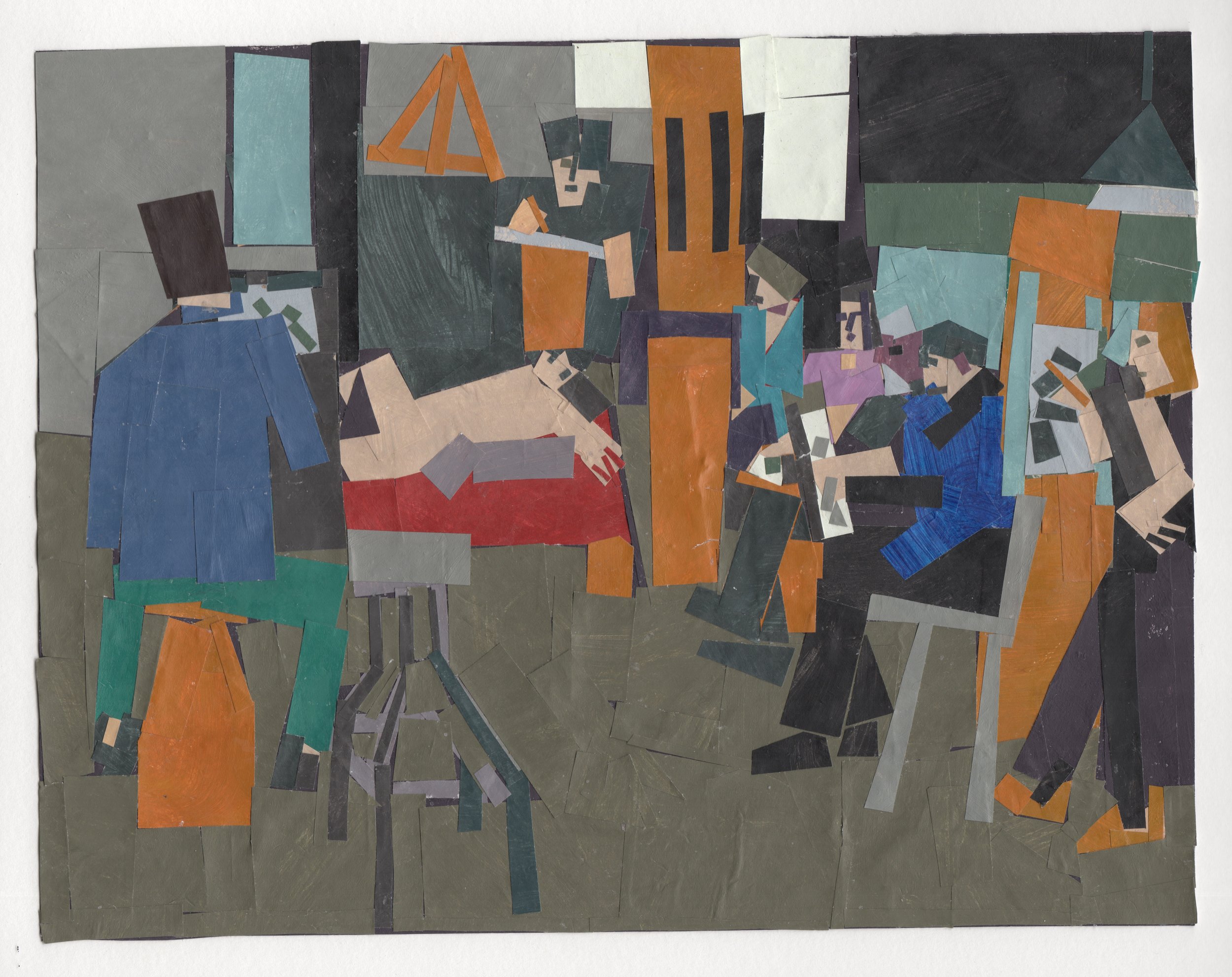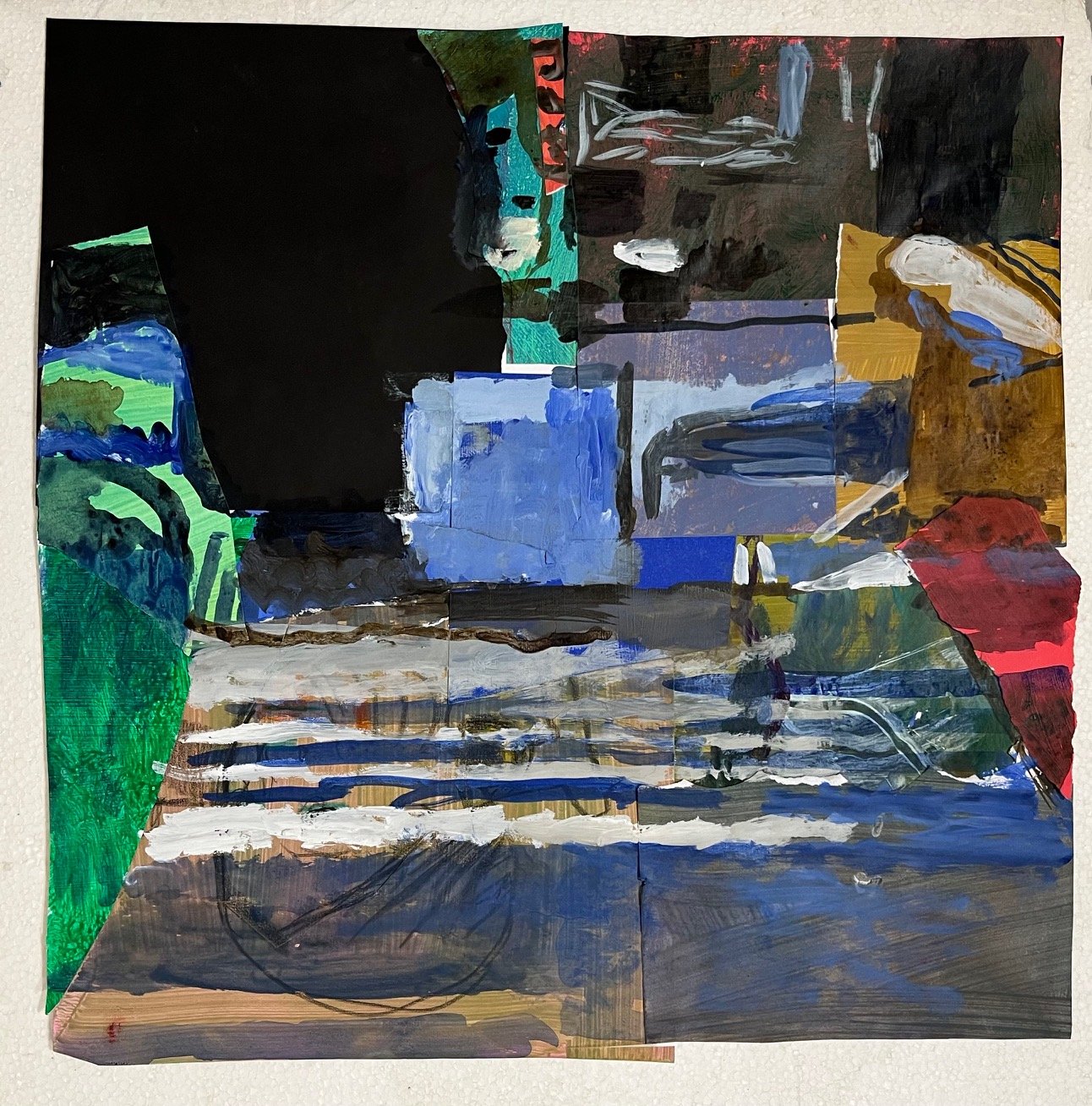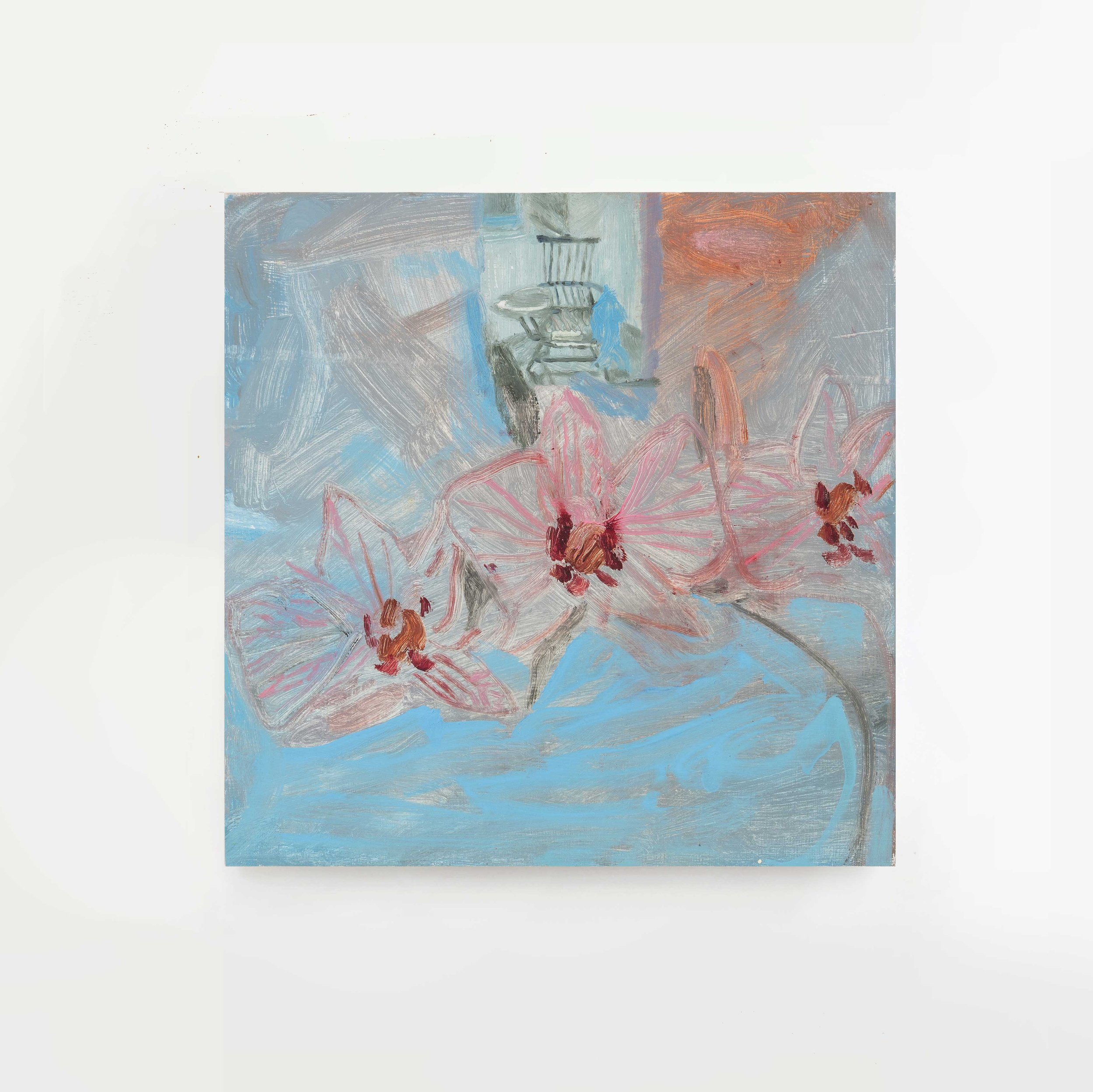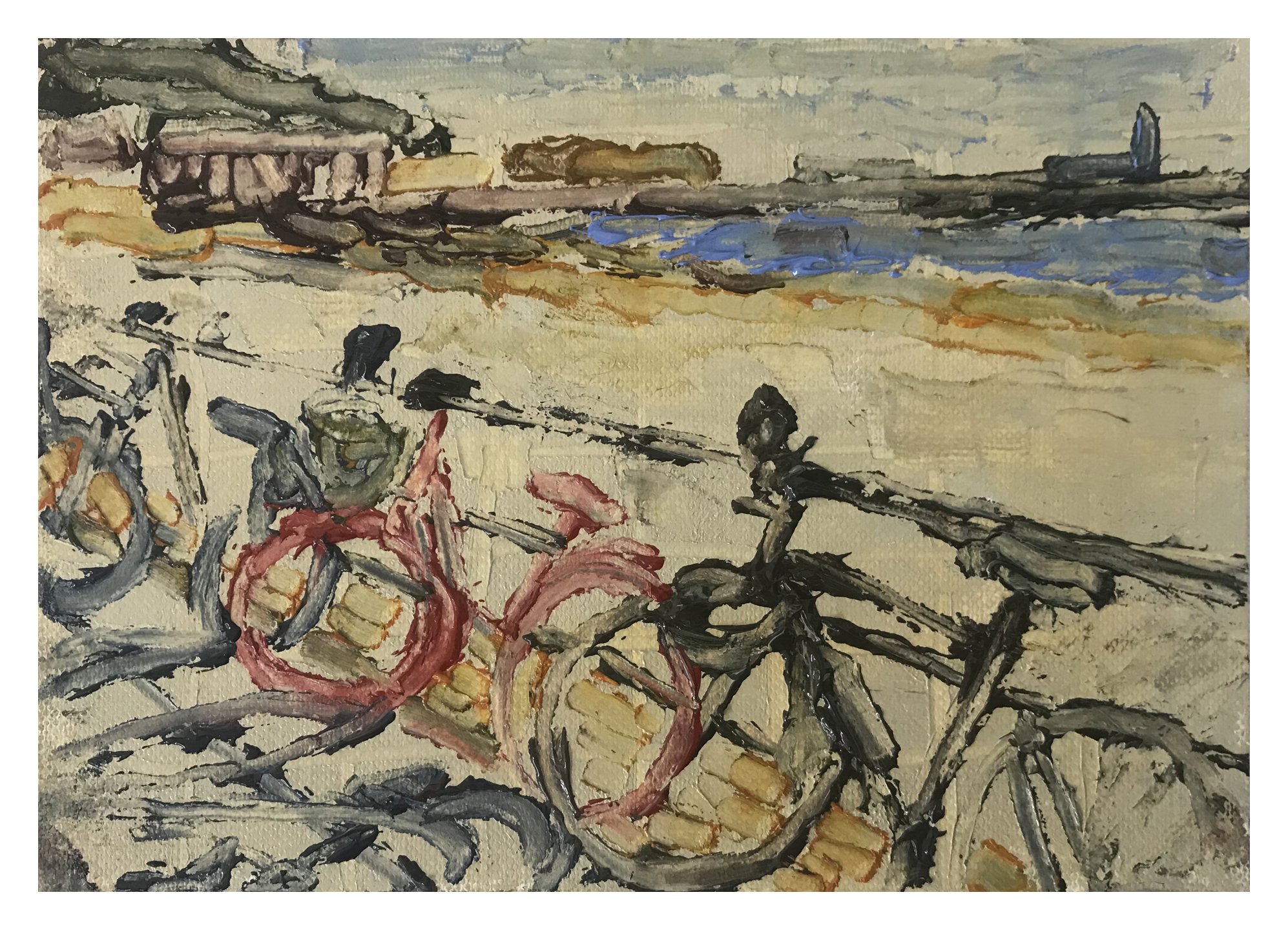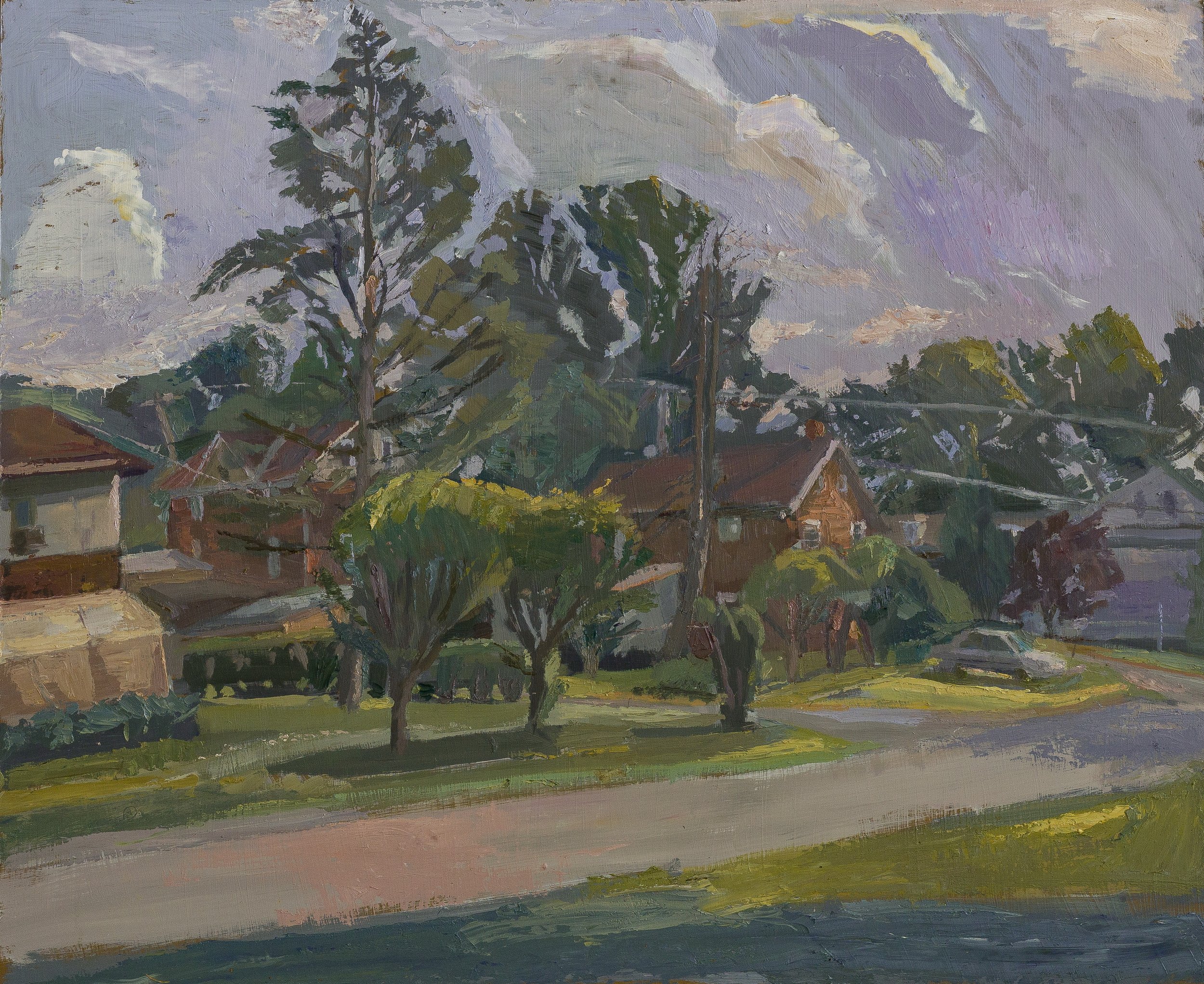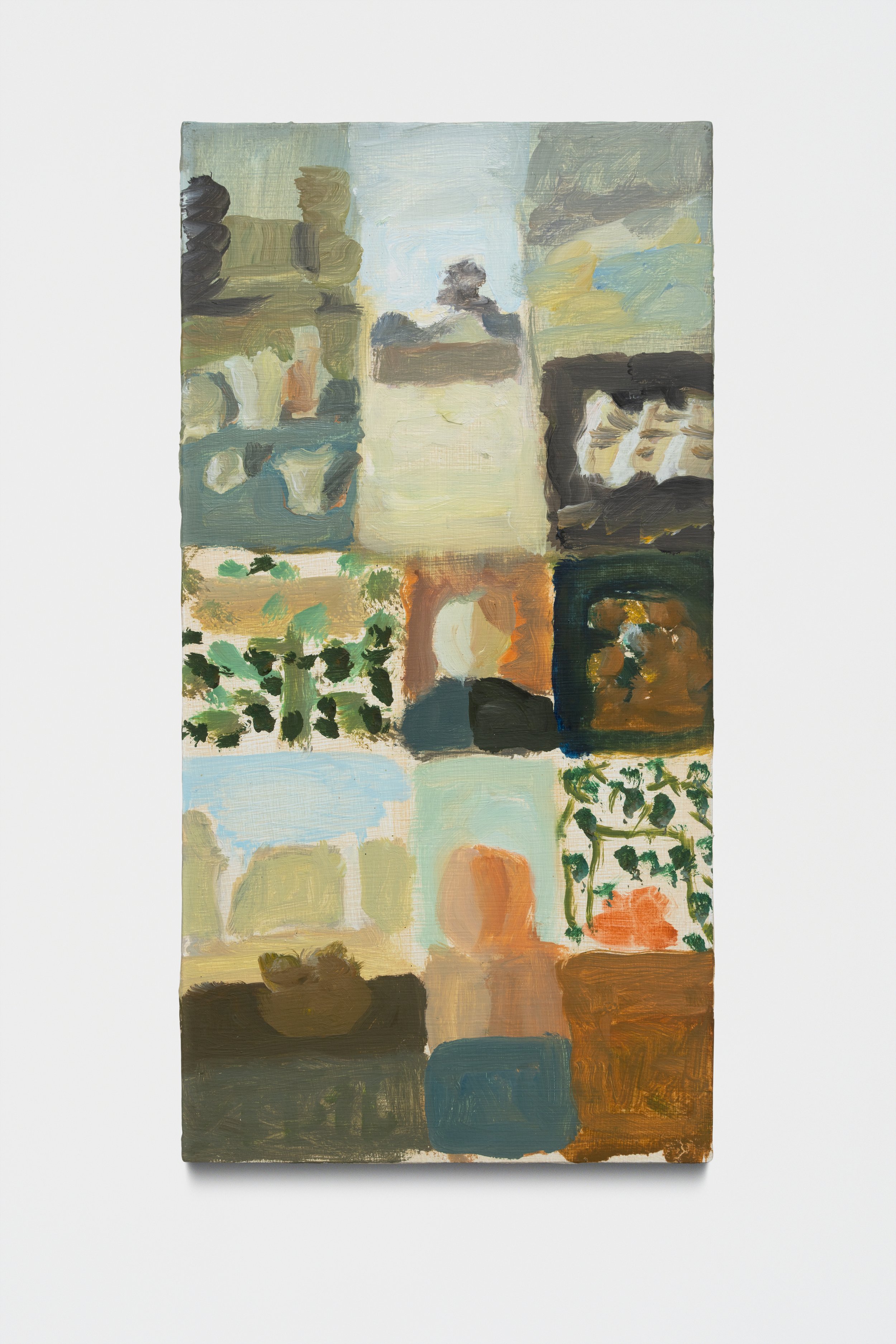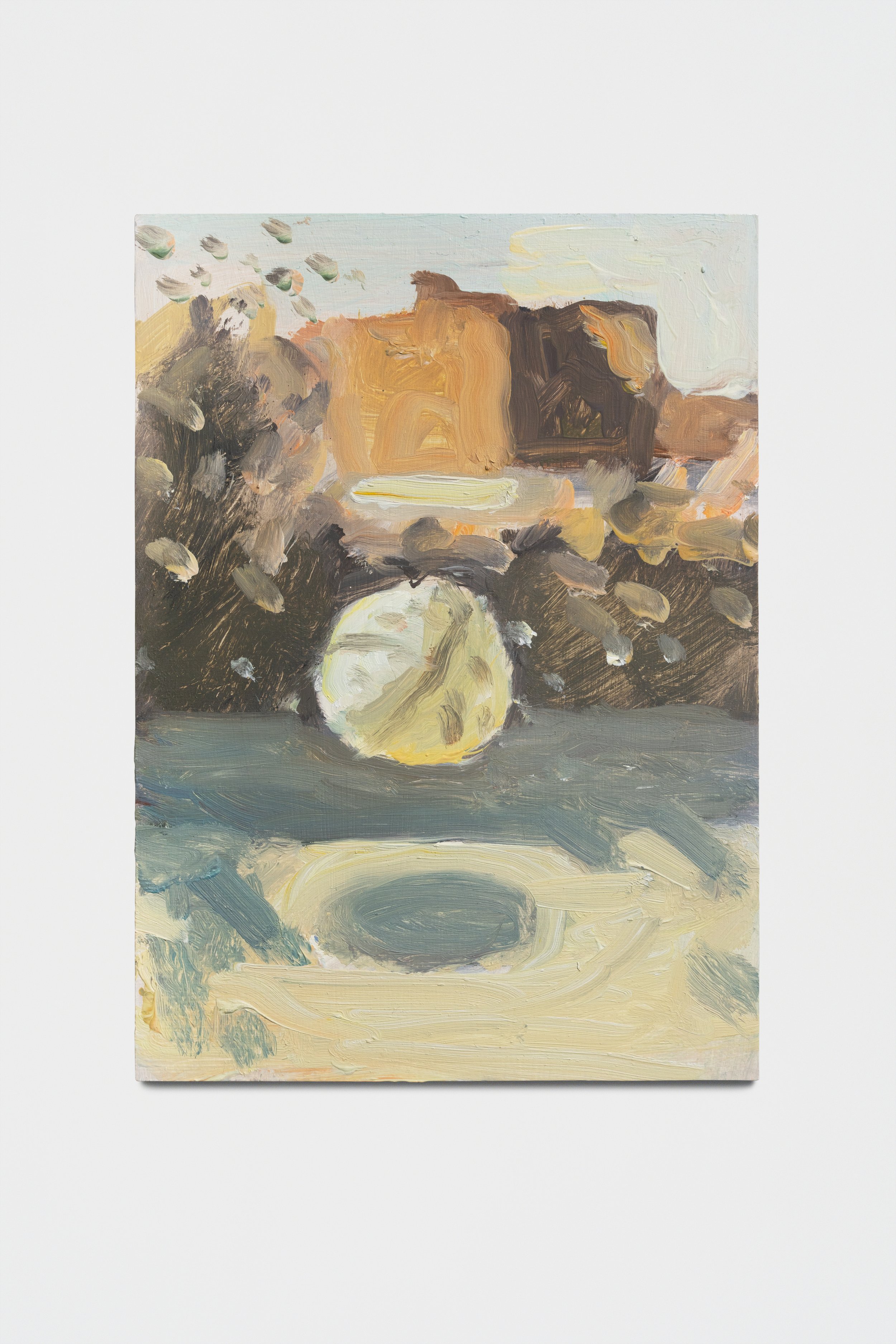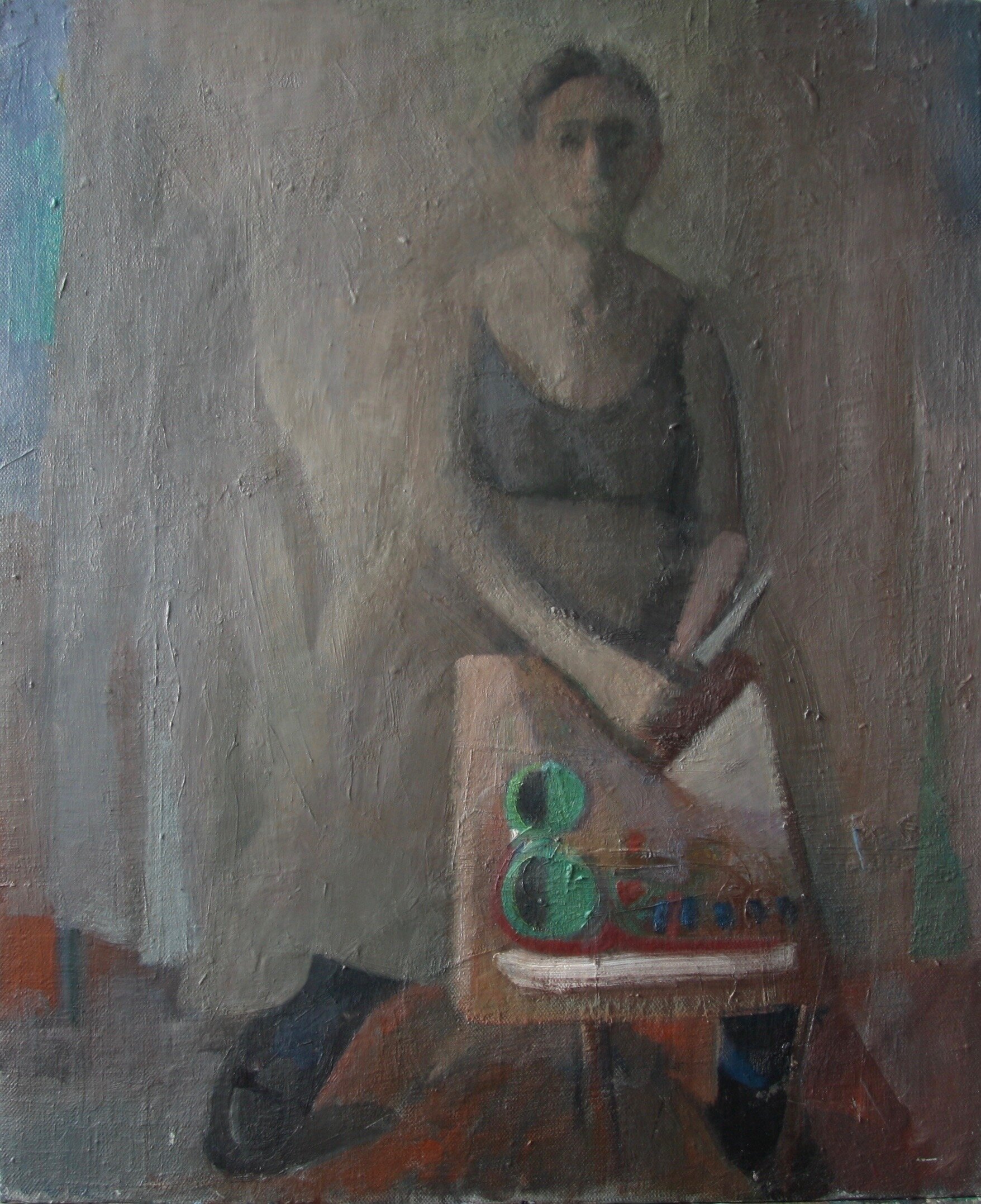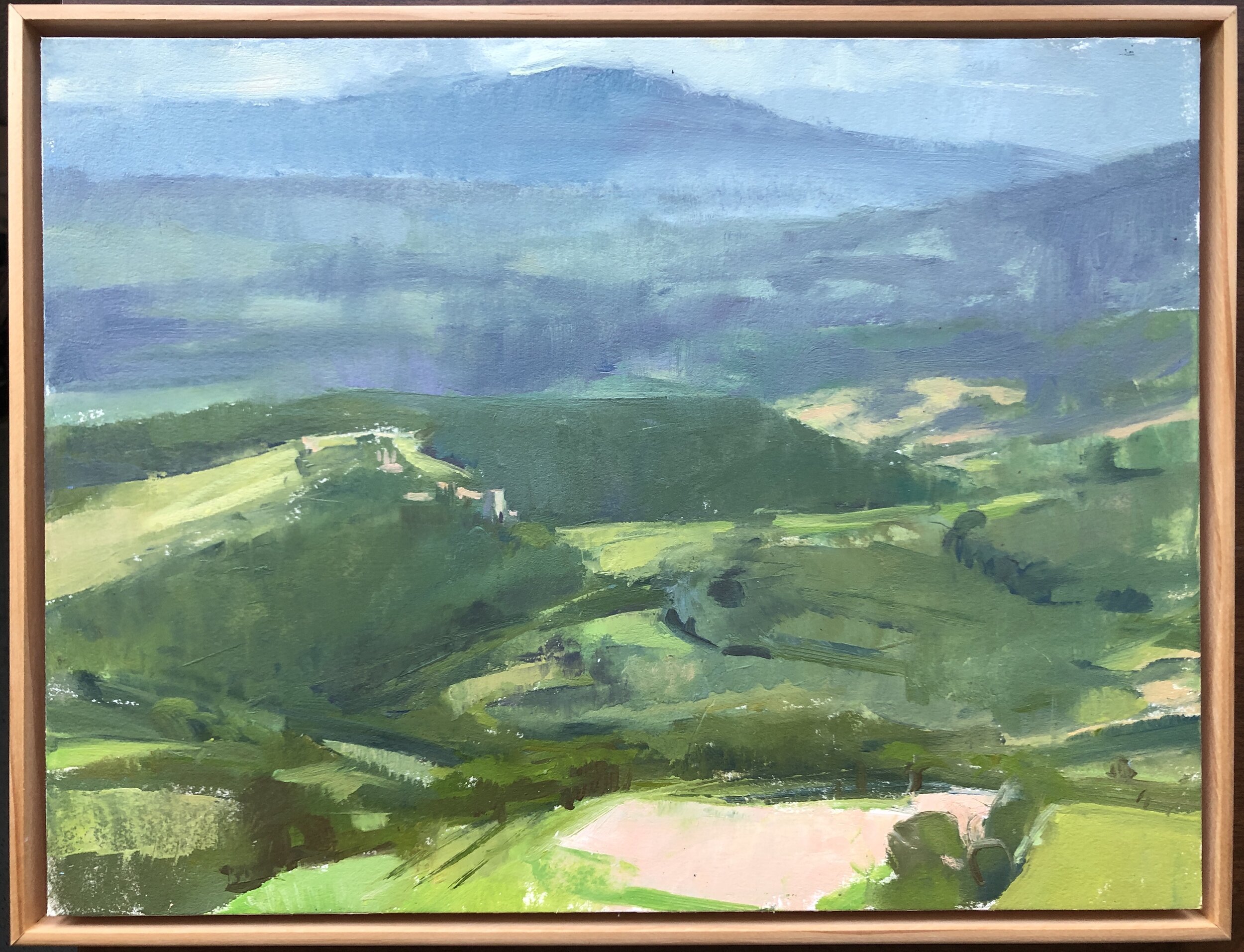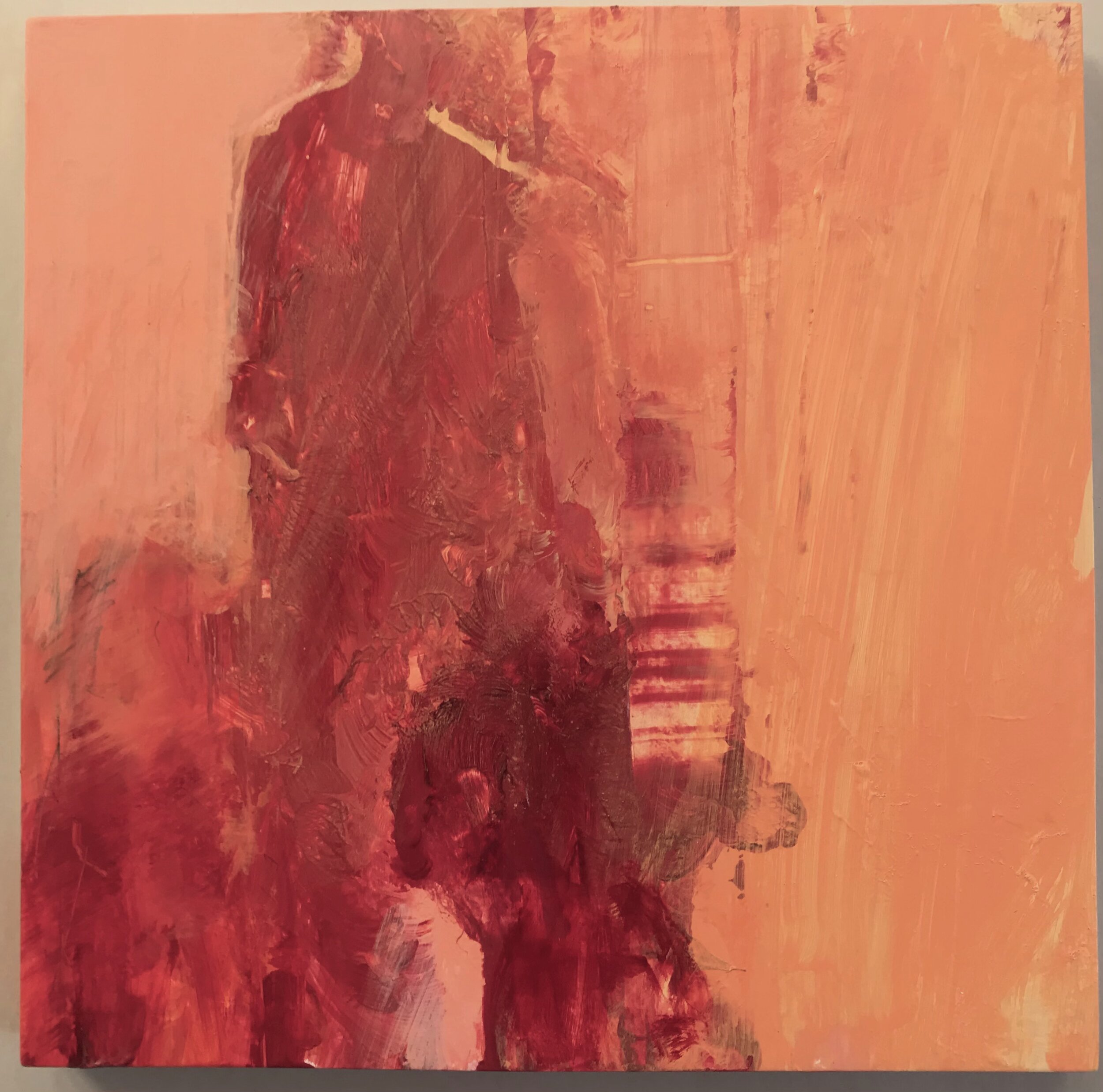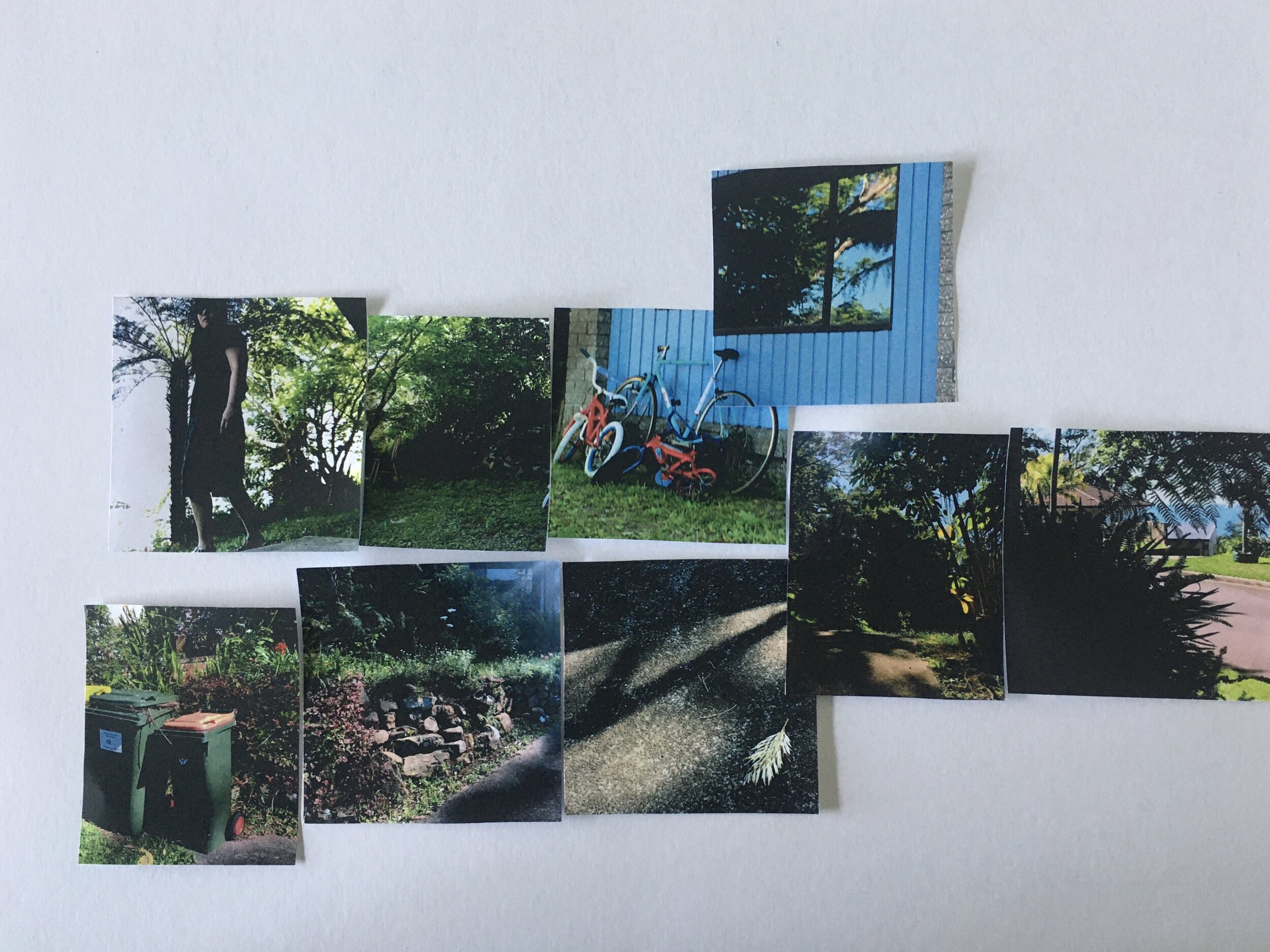Laura Vahlberg: Hi Zach! Thanks so much for doing this interview. Can you talk a little bit about your drawing materials and your multimedia process?
Zachary Darlington: Sure, for the most part I'm using pencils nowadays; graphite, coloured, charcoal, carbon, and such. Sometimes I'll go a bit extravagant and use wax crayons, drawing pens, and pastels. I'm a bit of a hoarder in all honesty, and I've collected many different varieties of materials over the years that at this point, I'm just reaching for whatever feels right in a drawing, usually for a different texture or value. It kind of reminds me of my granddad's thought process in that he'll save anything that appears insignificant in the moment, yet my granddad knows that one day that seemingly bit of rubbish will come into it's own one day, and be useful.
I like to use a mix of quite crude, modest, or humble materials I suppose you could say, such as cheap pencils you'd find in a primary school like the stalwart Stabilo HB pencil, and more artist orientated 'professional' equipment.
I think the reason why I choose the materials I use is the familiarity and the almost nostalgic, childlike feeling I get from using them. I was using the same pencils I use now when I was a toddler struggling to learn how to write the number 3 (I've since mastered that). And although I wasn't using Conté pencils back then, those feelings are still there simply due to the fact it's still a pencil.
LV: What are some artists that influence you? Are there any artists that draw with pencil that inspire your work?
ZD: I think I'm generally more influenced by film and photography above all when it comes to thinking about drawing. My favourite directors are most likely Wim Wenders (he's also a fantastic photographer), and Ken Loach. I like things that are almost like a timestamp of something; an event, a specific feeling, or a location, which is something I try to translate in my drawings.
Of course when I was younger and a student, I went through studying art history and became acquainted with the masters. But as a working class lad from North West England, it felt a bit high brow for me and something I couldn't really relate to.
In terms of artists that use pencil, I don't really know of too many myself unfortunately. I don't really take too much inspiration from other people with regards to the materials I use, it's just something I fell into really. That's a bit of a shit answer I'm sorry, but I can't really elaborate past that I'm afraid.
Title: Hotel Room in Llandudno
Medium: Coloured Pencil and Wax Crayon
A4 Paper
LV: How would you describe a perfect drawing?
ZD: A perfect drawing for myself would be when it echoes a sensation I'm trying to convey. For example, when I draw using something here in England as a reference, I'm thinking about the smell of conifers or the sound of wood pigeons coo-ing or a faint bassline from someone's Vauxhall Corsa. Or when I use a reference of a place I've visited, I try to focus on a sensation that reminds me of that place; an example of which would be when I visited Genoa last year, everyone wore this specific aftershave that just takes me back to wandering through that city. I don't walk around specifically smelling people by the way, it's just when someone would walk past I'd get this waft of citrus, coupled with maybe cigar smoke. Of course, sometimes I use references of places I've never been to, in which case I use my own preconceptions of a place which I acquire through media, people I've met, or just what I can imagine that certain place is like.
Once I can feel, hear, smell, or taste that sensation through the drawing then I would consider it finished.
LV: Can you select one of your pieces and tell its story? What was its journey into being like?
ZD: I'd like to select the (below) image to speak about, titled 'Abandoned Gilera Runner'.
Title: Abandoned Gilera Runner
Medium: Graphite and Colored Pencil
Paper Size: A5
It started with the backdrop of typical housing found in my town and throughout the UK, hastily thrown up in the 70s/80s. The exact location I was thinking about was a housing estate not too far from me, which was built for the people of Liverpool when it started to be gentrified and they were shifting people out of the city to make way for shiny new buildings.
I then thought about a time when I was younger, when I would go down to the local park to play football. I was probably about 11 at the time, and from going to the park I befriended some older kids who were probably getting on to 18. They weren't the most responsible of people, but their friends were even worse. There was a guy I met through them who enjoyed stealing things, mainly cars. I think the first time I met him he was in a classic VW Beetle painted purple. Anyway, once we met up with him, and he had a freshly stolen Gilera Runner scooter, which was the choice mode of transport at the time for a tracksuit wearing teenager. In the middle of a conversation, a police car swooped round the corner and everyone ran. I was a pretty fat kid so I was absolutely terrified a policeman would come up behind me at any second and cuff me, but they went after the chap on the scooter. I lost everyone and so started to walk home, when I came round a corner and there was the Gilera Runner, abandoned. I was so scared that the police would end up knocking at my door that I didn't tell anyone; I didn't even brag to my friends at school that I ran from the police over the weekend, which was something I could've easily wore as a badge of honour.
I wanted to resolve the feelings I experienced of anxiety and relief when I realised the police weren't after me anymore, which is why I included a vignette of 11 year old me relaxing on the sofa.
LV: Do you make studies or thumbnails?
ZD: Nothing like that really, I tend to just jump straight in. Sometimes I'll do a simple framework of a drawing using a straight edge and a light pencil, but that's about the only preparation I do.
Title: Loads of Pots For Sale on Gumtree
Medium: Graphite, Charcoal, and Wax Crayon
A4 Paper
LV: How do you go about choosing a motif?
ZD: It's kind of related to the answer I gave in (3), but the motifs I use are generally selected due to some sort of affliction I have with it. I also generally prefer the more forgetful, mundane motifs.
People like Turner, Constable, Gainsborough and such are generally considered titans of English artists, and whilst they are incredible, it isn't really synonymous with most people's experiences with living here. I think the only thing I take from those guys is the skies they painted, cos it's always bloody grey here. I didn't grow up in the foothills of a majestic mountain overlooking a choppy sea; I grew up on a terraced housing estate. I'm proud of my working class roots, so it's something I really enjoy delving into and celebrating.
Title: Church and Dead Tree
Medium: Graphite and Wax Crayon
A5 Paper






